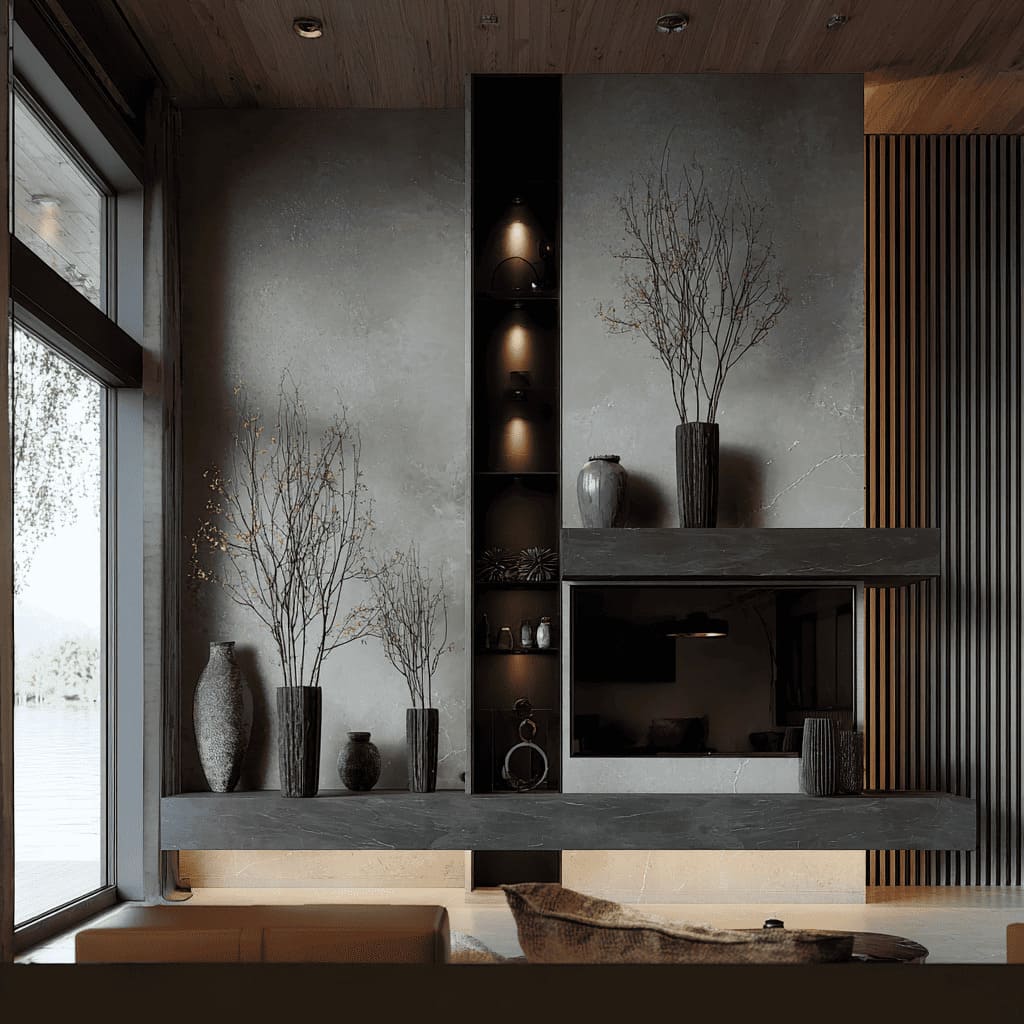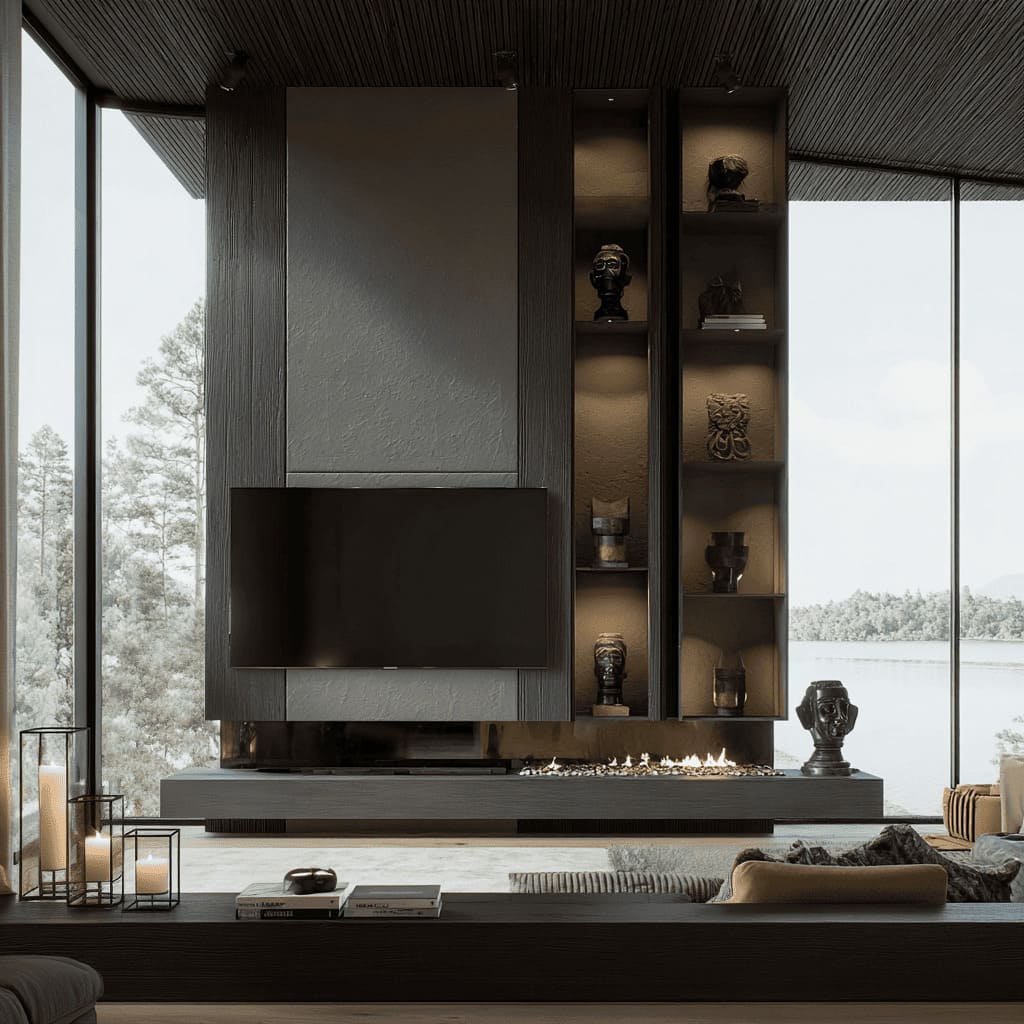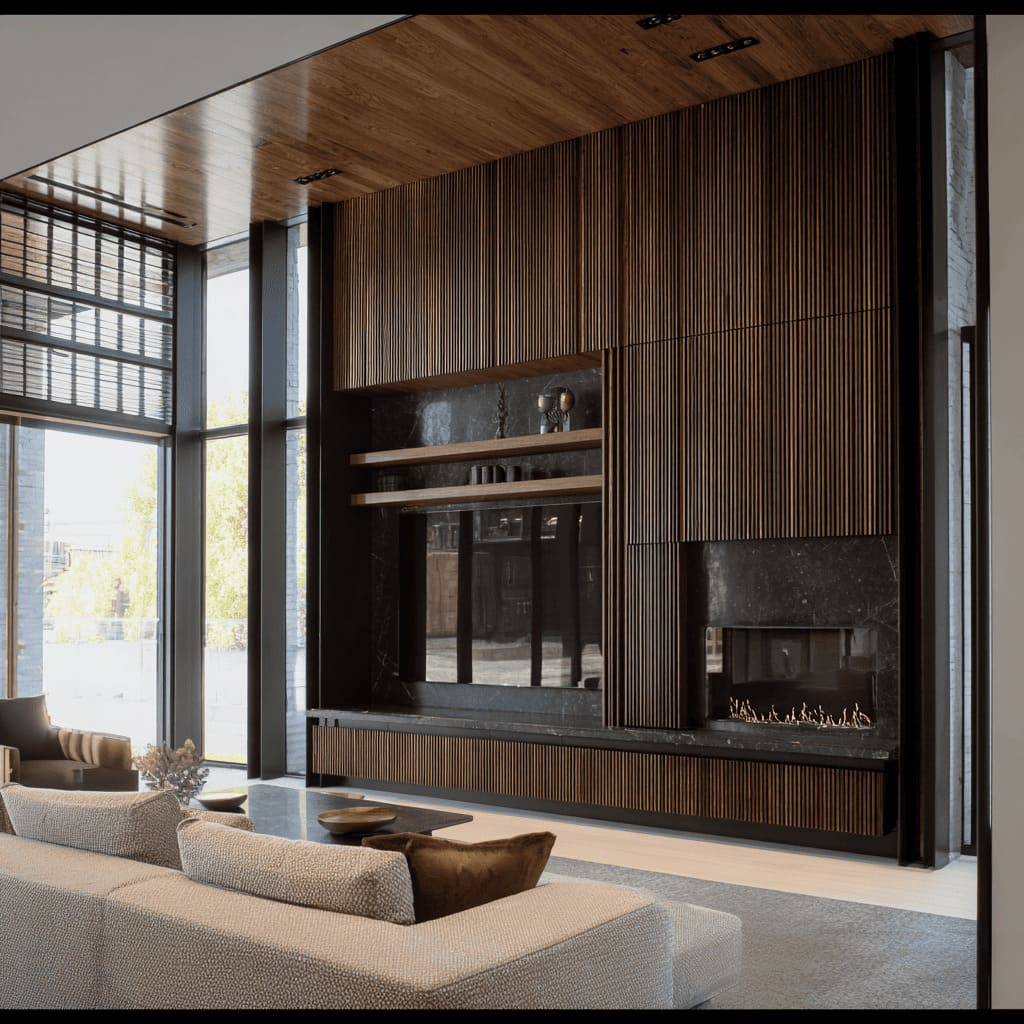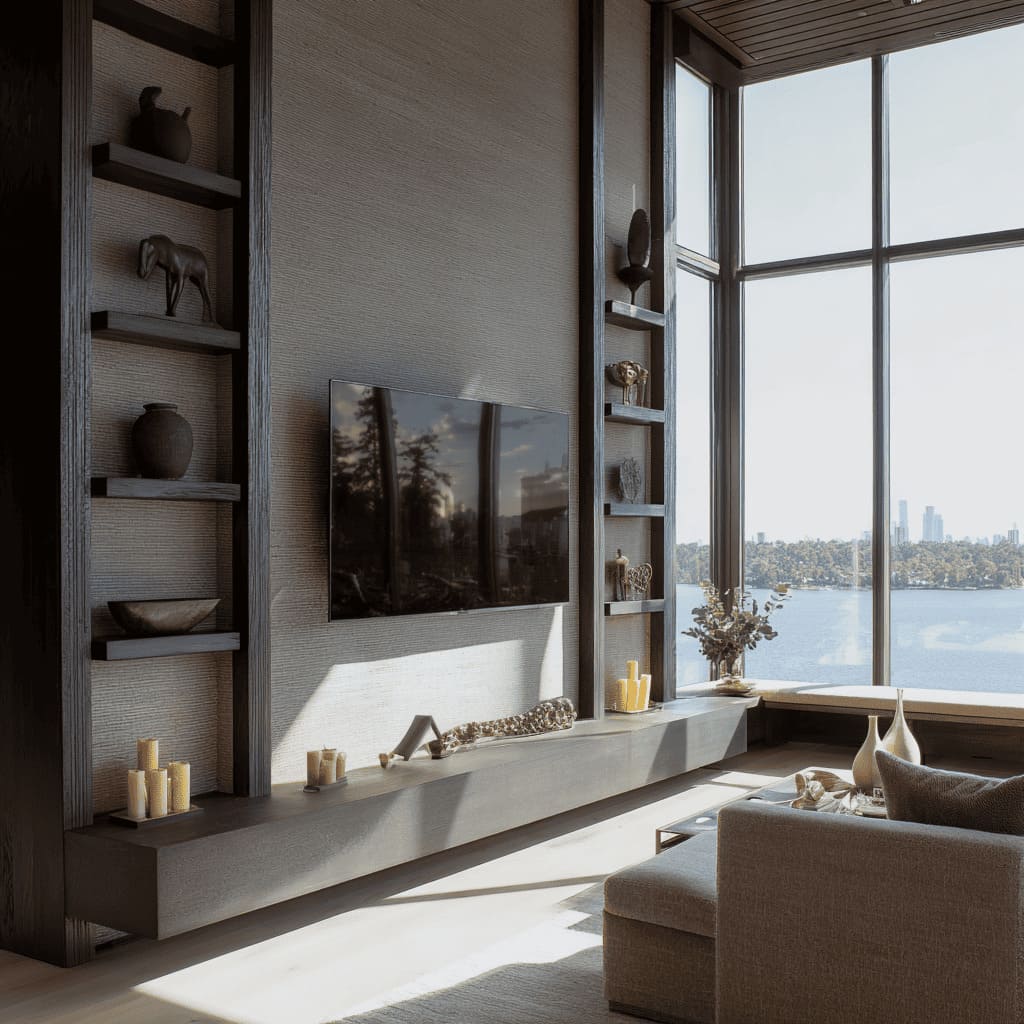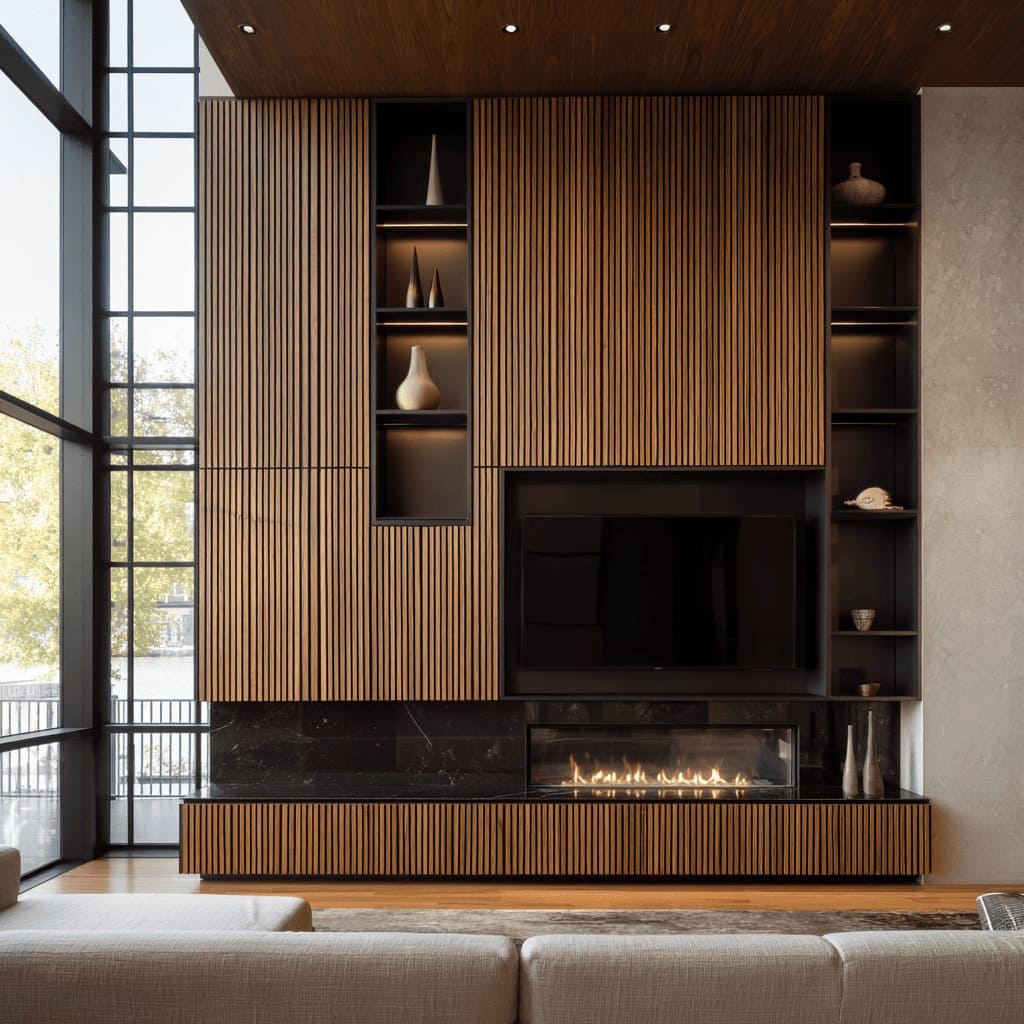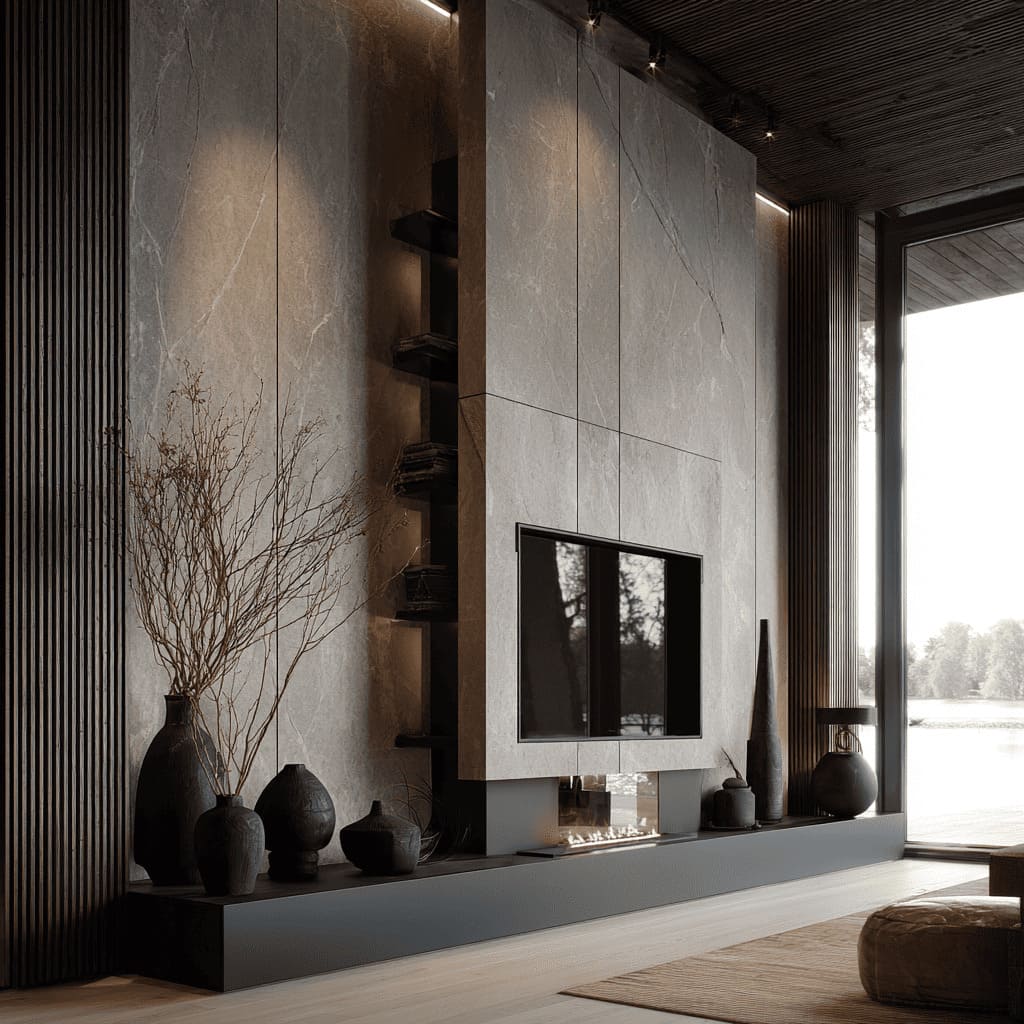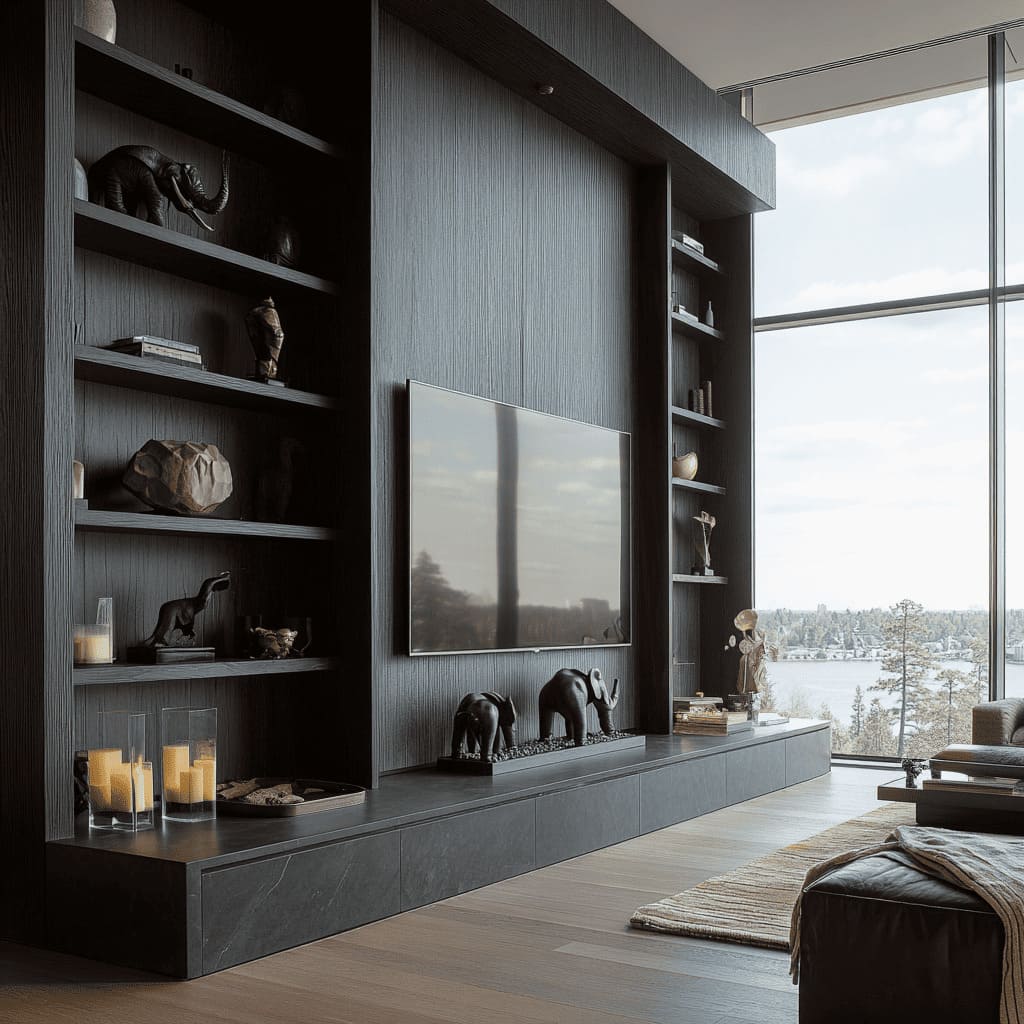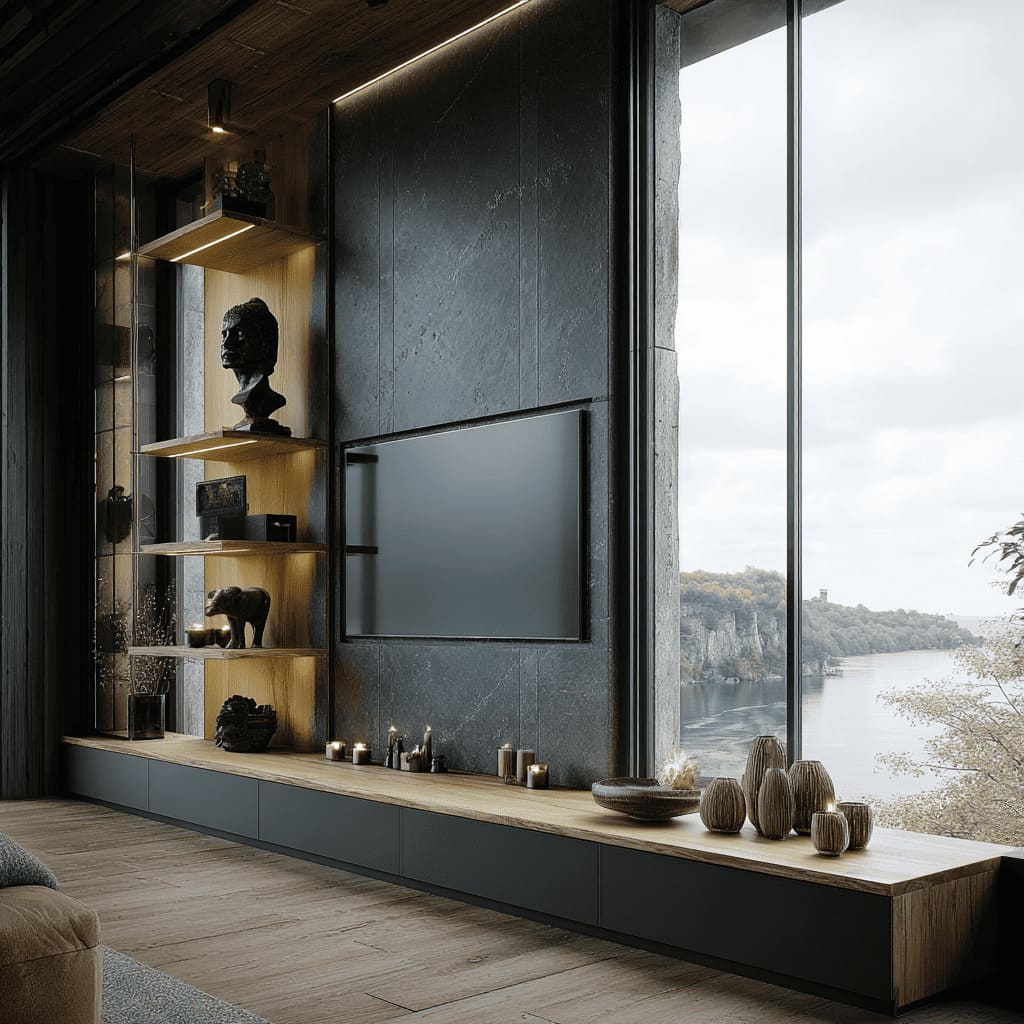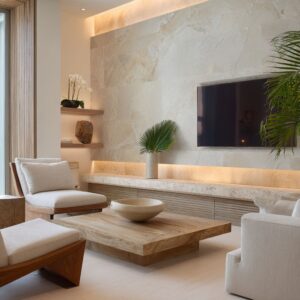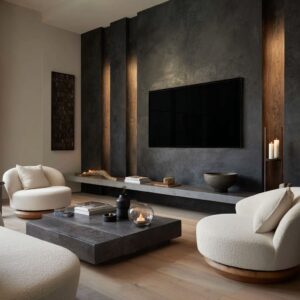A contemporary TV wall isn’t just a background for entertainment—it’s the sculptural heart of a modern living room. The best designs today are not about loud statements or decorative excess; they are about proportion, restraint, and how materials interact with light.
From warm minimalism to dark, tactile elegance, these ideas redefine how a living area feels and flows. Below we explore the most refined contemporary TV wall decorating ideas, revealing the subtle tricks and visual rhythms that make them stand out in modern homes worldwide.
The Art of Stillness: Why Negative Space Matters
In contemporary interiors, silence often speaks louder than decoration.
Designers now treat empty wall zones as design elements—wide smooth fields of stone, plaster, or microcement become the “canvas” for smaller accents like shelves or vases.
The blankness isn’t absence; it’s intentional calm. When the TV sits within generous breathing space, the entire wall starts to feel architectural rather than functional.
Viewers don’t see a screen corner; they experience a visual pause—a balance between technology and tranquility.
Micro-Asymmetry: The Secret to Natural Balance
One of the most striking modern design moves is the use of controlled asymmetry.
Instead of aligning every shelf with the TV, designers offset elements just slightly—a few centimeters above or below expected lines—to guide the eye diagonally.
These small shifts introduce movement and prevent rigidity. A single tall branch on one side, a dark vertical mesh panel on the other—these minor variations turn geometry into living art.
The result feels deliberate yet effortless, like nature’s own sense of order.
Playing with Vertical and Horizontal Rhythm
The most stylish TV walls borrow rhythm from music: vertical panels set the beat, while fireplaces and ledges provide horizontal flow.
Fluted wood ribs or narrow stone joints form a vertical tempo, elongating the wall and emphasizing height.
In contrast, a horizontal fire line or stone bench creates a steady base note, grounding the space. The dialogue between these directions is what makes the wall dynamic without visual noise.
Light That Shapes, Not Shines
Lighting in contemporary living spaces has shifted from brightness to intentional sculpting.
Instead of wide beams or general illumination, designers now rely on soft grazing and under-shelf glows.
Light isn’t just seen—it’s felt through shadows. A fine strip hidden beneath a ledge can lift a heavy stone slab visually, making it float.
Recessed spotlights can pool light onto a single vase, turning it into a small stage. The goal is selective visibility: highlight texture, reveal depth, and keep the sources invisible.
Texture as the New Color
Contemporary style thrives on monochromatic layering.
Rather than mixing bright colors, it layers matte, satin, and polished finishes within one tone family—warm gray microcement beside brushed metal, smooth oak beside ribbed panels, soft linen beside dark stone.
This tactile contrast adds quiet richness. When light grazes across these surfaces, you get a gradient of sheen and shadow instead of color clutter.
It’s how modern interiors achieve visual complexity while staying calm.
The “Luminous Column” and the Power of Built-In Warmth
In several top contemporary setups, shelving itself becomes a source of light.
A luminous oak ladder or a softly glowing shelf stack creates warmth that feels personal rather than decorative.
Each item—whether a ceramic sculpture or bronze accent—is curated by shape and shadow, not by matching theme. The gentle glow turns everyday objects into silhouettes, giving the TV wall a sense of depth and quiet storytelling.
Integrating Nature as a Living Layer
Modern interiors rarely treat outdoor scenery as something separate.
Reflections of trees or sky in the TV glass, daylight skimming across ribbed panels, and branches placed near stone surfaces—all help the wall breathe with its surroundings.
This fusion of natural movement and still architecture gives the space emotional life. It also softens the presence of technology, letting the TV feel like part of the landscape rather than a digital interruption.
Curating Objects by Silhouette, Not Theme
The difference between a designer display and a cluttered one lies in how pieces are chosen.
Contemporary stylists think in profiles and weight, not stories.
They’ll pair a camera, an abstract bust, and a ceramic bowl—not because they match, but because their outlines read well against backlighting. Grouped in threes or fours by height or mass, they form a rhythm that feels natural and collected over time.
The Modern Fireplace: A Line of Warm Light
Linear fire elements have evolved from rustic hearths to horizontal ribbons of flame that balance the verticality of tall walls.
Placed just below the TV or off to one side, they serve as both warmth and visual punctuation.
The subtle glow reflects in glass, polished stone, and metallic decor, creating small highlights that animate otherwise muted materials. The key is restraint: the flame is narrow, controlled, and perfectly scaled—bright enough to catch the eye, never large enough to dominate.
Material Pairings That Define the Look
The finest examples of contemporary TV wall design share a disciplined palette:.
- Stone + Wood: A cool gray stone slab paired with matte oak adds harmony between warmth and minimalism.
- Ribbed Panels + Smoked Glass: Creates texture depth and layered reflection.
- Charcoal Fields + Brass Details: Introduces a touch of glow that reads refined, not flashy.
- Microcement + Mesh Insert: A clean surface broken by a subtle tactile band for contrast.
Each combination works because it respects tone continuity and introduces contrast through texture—not color.
Hidden Details That Make a Difference
The quietest tricks are often the most sophisticated:.
- Thin shadow reveals between modules make panels look hand-crafted.
- Narrow toe-kick glows let cabinets appear to float.
- Off-center shelving creates compositional flow.
- Muted accessories with mixed finishes—matte, brushed, smoked—add sparkle without color.
These nuances are what separate high-end design from mass-market imitation.
Building a Composition, Not Just a Wall
A true contemporary TV wall behaves like an abstract artwork.
Think of it as a composition of geometric fields: a square for the screen, a horizontal for fire, a long rectangle for bench, and a series of thin verticals for rhythm.
When each shape is measured against the others—balanced in size, tone, and distance—the wall feels serene even before you add decor. It’s this geometric discipline, softened by organic objects and natural materials, that gives the modern TV wall its unmistakable calm.
Final Thoughts: The Contemporary Calm
The modern home no longer treats the TV wall as a piece of furniture. It’s a visual anchor—a dialogue between art, technology, and architecture.
Its success depends not on expensive materials, but on how those materials meet light, proportion, and air.
Whether you choose warm oak and soft stone or bold ribbed walnut with dark marble, the principles stay the same:
keep the rhythm clear, the textures layered, and the composition free to breathe. That quiet precision is what defines contemporary style today—and what makes a modern TV wall feel not just functional, but timeless.


